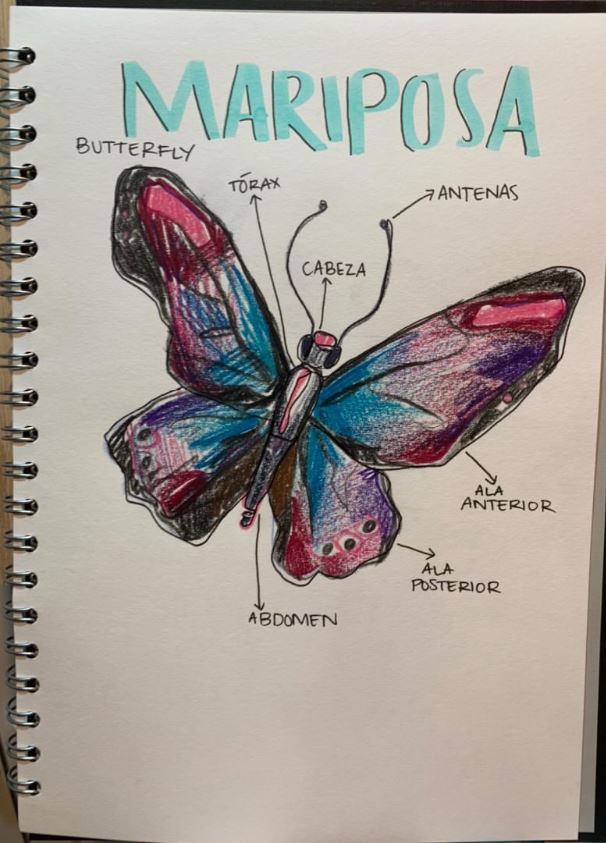Today in the International Day of Multilingualism – the perfect day to address a question we have been hearing a lot from teachers: is Lost Wor(l)ds just for primary? Are there ways to integrate multilingualism into secondary school? The answer to the first question is a resounding “no”, and the answer to the second question is a resounding “yes”!! While the Lost Wor(l)ds activities are predominantly conceived with primary schools in mind, most of the tasks are easily transferable for secondary, because it is the underlying principles around encouraging children to bring all their languages to the classroom that matter, and the strategies we have embedded in the activities are universal.
If we take the example of the Minibeast Display activity, the practice of encouraging children to label drawings multilingually works, no matter the subject or drawing, whether the drawing in question shows the parts of a minibeast, or a flower, or the water cycle, weather maps, etc. While the vocabulary may get more complex as children get older, the same principle applies – enabling children to use all their languages to access the curriculum, show off their knowledge no matter the language, and puzzle out meaning based on their full linguistic repertoire.

Other activities, such as Letters for Change, are pitched very much at the upper end of primary school, asking pupils to pick an environmental concern, research it, and compose a formal letter. In fact, one of the resources we link to is the BBC’s KS3 Bitesize support on formal letter writing, and this activity would be suitable right up to GCSE, as pupils would be expected to formulate their concerns more scientifically, and/or adapt their language. As such, it is also a great resource in terms of differentiation – while some pupils may use words like biodiversity, deforestation, etc., others may talk about nature and felling of trees.
The Rivers of Reading activity has no upper age limit – in fact, we would encourage teachers to take part in it! Since it explores reading in a more or less chronological way, there is a start (essentially, birth), but no end, other than the current moment. Older children will be able to express their reading experiences in more detail, and can be invited to reflect more deeply on what influences their choice of “important” reading materials across their languages. Similarly, the Book Review activity can easily be adapted for older children, too, inviting children to review books across all their languages.
The Creature Feature activity invites children to draw on an animal’s five senses to create a poem or puzzle – an activity that easily expands into KS3, and even 4, as pupils will simply have expanded vocabulary and experience of poetry to draw on.
If you do use the activities at Secondary School level, we would love to see the results, and if you would like to discuss ways of integrating multilingualism in your school (whatever the level), just contact us at lostworlds (at) sheffield.ac.uk.
